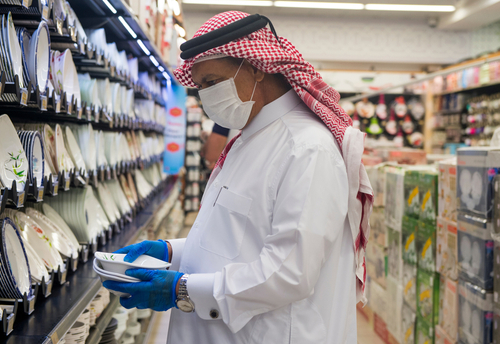Infection Rates in Arab Countries: A Tale of State Capacity

Figures published by Le Monde on 15 September 2020 based on information provided by the Johns Hopkins Coronavirus Resource Center once again point to a correlation between the infection rates reported by individual states on the one hand and some of their political features and economic characteristics on the other. Though neither mechanical nor a reason to examine other variables, the correlation nonetheless seems to be significant and plausible.
Conflicts and Infection Rates
Most states gripped by violent internal conflicts (with their obvious international dimensions) continue to report low infection rates, even though these conflicts in some cases have temporarily lost in intensity: Yemen 70.6 cases per 1 million inhabitants and Syria 211.5 cases per 1 million inhabitants; Sudan where only recently a partial agreement between the new government and armed groups was signed reports 323.7 infections for the same number of people. In actual fact, these infection rates are among the lowest in Arab countries. Part of the same league before the summer, Libya now reports 3,520.9 cases per 1 million inhabitants and thus a sharp rise in cases. Like all figures, these counts necessarily reflect a variety of variables, including deliberate attempts to hide unwelcome news; however, they might also illustrate that a state in conflict and other actors on the ground may acquire the capacity to record cases more effectively, even though it may not have acquired the capacity to treat them as well as others. Reportedly Libya counts 55.1 deaths for 1 million inhabitants while neighbouring Egypt counts 57.5 for about a third of reported cases. It may be pointed out that in spite of the conflict GDP per capita in Libya amounts to USD 7,683 (GDP figures and estimates provided by the World Bank ), while it stands at USD 2000 in Syria, USD 968 in Yemen, and USD 441.5 in Sudan; according to World Bank classifications, Syria technically remains a middle income country, Yemen and Sudan are low income countries.
Figures and State Capacities
About half of the other middle-income countries continue to show “middling” infection rates: Algeria reports 1,148.4, Egypt 1,027, and Morocco 2,448.1 cases per million inhabitants. Tunisia reports only 638.2 and Jordan as little as 354.3 cases for the same number of people. On the other hand, infections in Lebanon have considerably risen to 3,708.7 and in Palestine to 6,207.8. Already high before, the reported figure for Iraq is 7,6661.9 now. Overall these figures correlate again with state capacities that are larger than in the countries torn apart by large scale armed conflicts (Palestine remains occupied and politically divided, but it is not affected by large scale open warfare; Iraq experiences a high degree of political violence but not a fully-fledged domestic war; Lebanon is often said to be on the brink of a new “civil war” but so far managed to avoid it). In Algeria, Egypt, Palestine, Morocco and Tunisia GDP per capita amounts to USD 3-4,000, in Jordan to USD 4,330 and in Iraq to USD 5,955. Except for Jordan, the number of reported infections seems to rise with GDP per capita. Infection rates in Tunisia and Jordan may confirm the earlier observation that limited material resources can be used in particularly efficient ways; the Tunisian case may also reflect the effects of a more accountable political system.
The Highest infection Rates are Reported by the Wealthiest Countries
In line with these trends, the highest infection rates continue to be reported by the wealthiest countries which are the member states of the partly defunct Gulf Cooperation Council (GCC). Saudi Arabia with a GDP per capita of USD 23,139 now counts 9,681.2 cases for 1 million inhabitants and the United Arab Emirates with a GDP per capita of USD 43,103 counts 8,224 cases. Qatar with a GDP per capita of USD 64,781 reports more than 43,000 infections per million inhabitants. Within that group of countries, the virus spread in particular among the many labour migrants who generally live in squalid conditions and extremely limited space. In Saudi Arabia they may account for a third of the total population of about 33 million, in Qatar for almost 90 percent of the total population of about 2.8 million. Put differently, higher GDP correlates with capacities to detect infections, not necessarily with infections as such. If detection may lead to treatment and cure, it may also lead to deportation and death.
Further readings
For earlier versions of the argument based on figures available at the time, please refer to my previous contribution to this Dossier, The Corona Virus in the Middle East and North Africa: “Arab Exceptionalism,” Once Again?
Access the other articles published on COVID-19 on the CERI website, in French and in English
Access the CERI Resources on the pandemic here .
Access the CERI Resources on Saudi Arabia here.
Access the CERI Resources on the Middle East here.
Access the CERI Resources on the Arab Uprisings here.
Access the CERI Resources on the war in Syria here.
Photo copyright: Shutterstock










